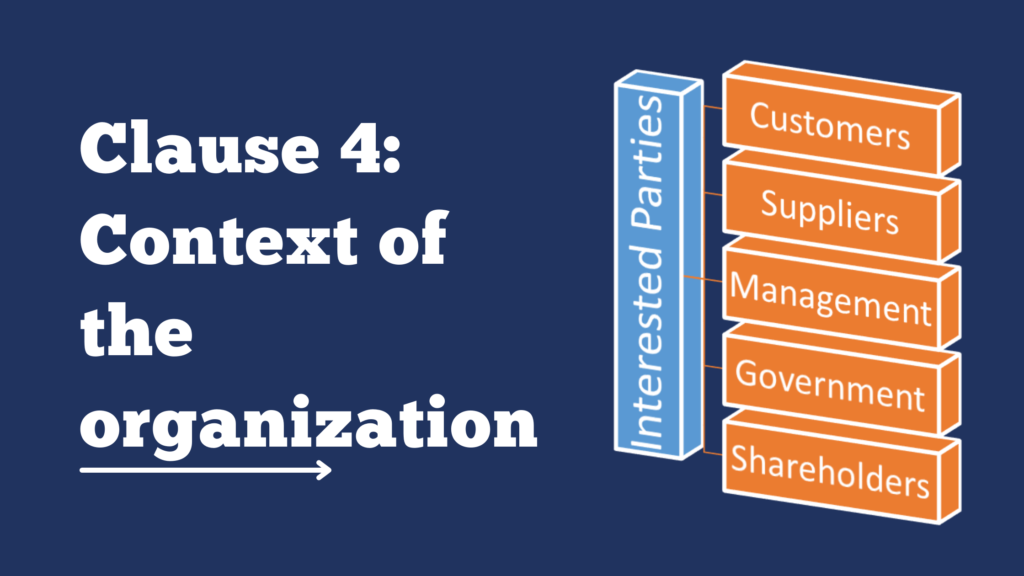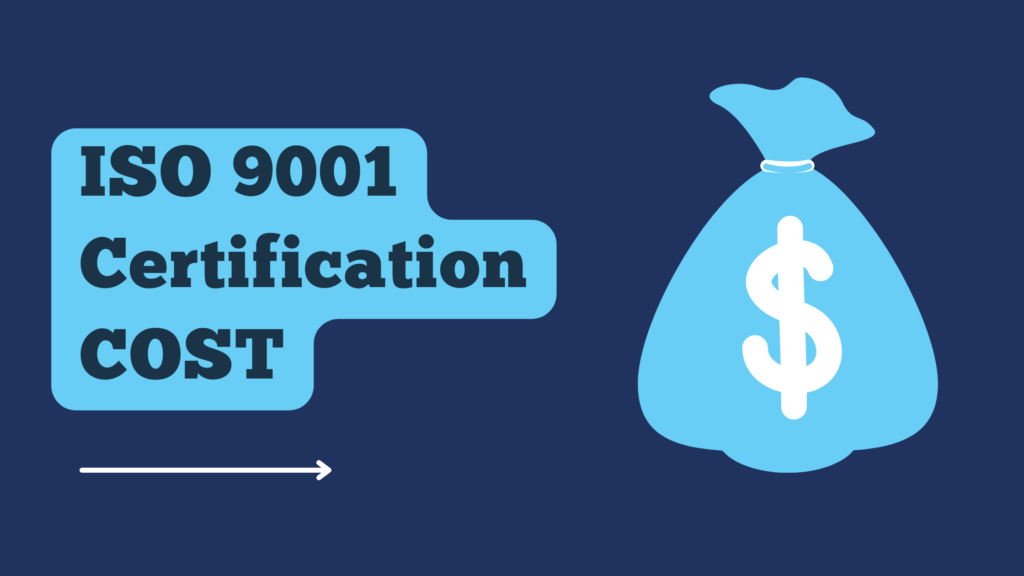Context of the organization – Explained, Elaborated and Simplified

Context of the organization is a new requirement in the standard which wants you to describe the organization before starting to implement the standard. This clause mainly talks about these:
- Internal external issues
- Needs and expectations of interested parties
- Scope
- Quality management system
In this article, we will cover the first two parts, while the scope and fourth part will be explained later to avoid complexity.
Why is understanding the context of the organizations important:
To implement ISO 9001:2015 quality management system standard in any organization, first knowing about the organization is important. The context of the organization clause lets us find out the overall situation in which the organization rests, like what are the strengths and weaknesses, who are the competitors, and if the environment is feasible or not.
Internal and external issues: (Context of the organization)
The clause tells us that we have to “determine the external and internal issues”. But the question is what “issues” are? The term “issues” needs elaboration here: “the considerable positive and negative factors about the organization”. So for example some issues can be:
- The site is situated in a prime busiest location of the city
- The company has the first-mover advantage/pioneer in this field
- Knowledgeable and experienced workforce specific to this industry
The ISO 9001:2015 standard describe in its clause for “context of the organization” some areas which can be used to find out the issues, these areas are described in the standard as:
External issues:
- Legal
- Technological
- Competitive
- Social and economic environment
Internal issues:
- Values
- Culture
- Knowledge
- Performance
Examples of issues:
Technological: The organization has the most advanced equipment as compared to other organizations (Positive factor)
Competitive: Organization has a competitive edge because right now only two other companies are in the same business. (Positive factor)
Economic environment: Due to political unrest, the overall economic situation of the country and the company is not appropriate. (Negative factor)
Social environment: The Company is situated in a remote location where necessities are difficult to reach.
These are only a glimpse of in what areas you can find the issues, however, if you have some other areas you can add those too.
Determination of Interested parties and their needs and expectations (Context of the organization)
The second part of the clause which is clause 4.2 (Understanding the needs and expectations of interested parties) describes that “the organization shall determine the interested parties relevant to the quality management system of the organization”. Now here we came across a new term called “interested party” as per the standard definition “the relevant interested parties are those that provide a significant risk to organizational sustainability if the needs and expectations are not met” in other words “interested parties are those who are affected or perceived to be affected by your business” or simply, anyone who is connected with your business, now standard has kept it open for you to brainstorm, so here are some of the interested parties I can think of:
- Customers
- Employees
- Management
- Suppliers
- Regulatory bodies
- Shareholders
- Owners
These are some of the examples, there can be more. Now once you name all the interested parties the next thing you have to do is to define the “requirements” of these interested parties which are also called: Needs and Expectations.
Needs and Expectations:
So you have to define the needs and expectations or in simple words, “what those parties want from you”, below I have defined 3 examples:
- Customers: Customers need quality products and services, customer want their order to be received with quality, economical cost, and delivery on time.
- Employees: They require true compensation for the services they are providing, they need salary on time and timely growth opportunities to build a career
- Owners: They need things to run smoothly in the company and increased or sustained profitability.
So till here, we learned:
Clause 4.1 of ISO 9001:2015: Understanding the organization and its context – in which we discussed issues that can affect the performance of our organization
Clause 4.2 of ISO 9001:2015: Understanding the needs and expectations of interested parties – in which we have discussed how to determine interested parties and to find out the requirement of those parties
In the next part, we will discuss how we can use clauses 4.1 and 4.2 to define the scope of the organization which is Clause 4.3 of ISO 9001:2015: Determining the scope of the quality management system



